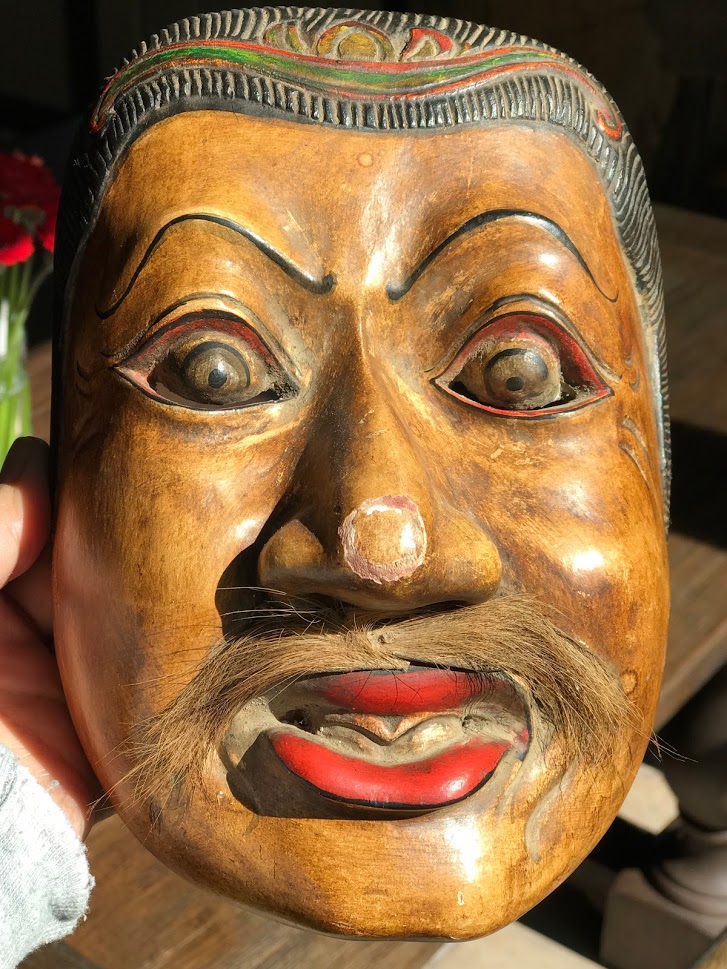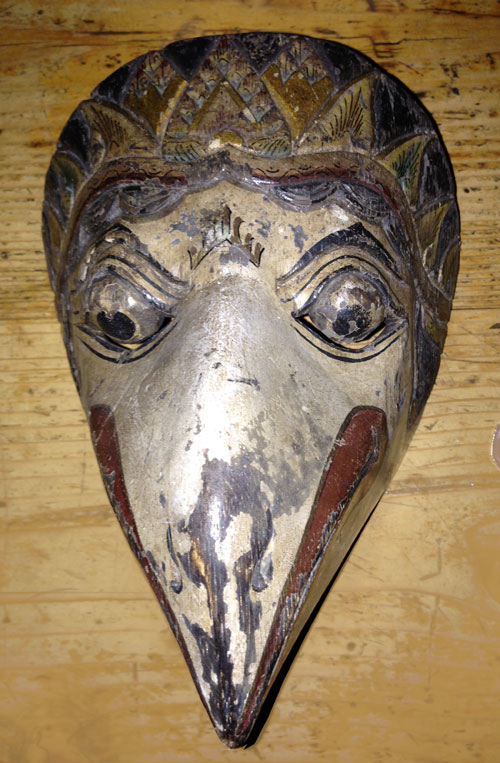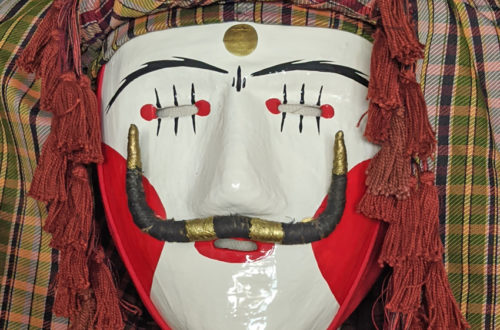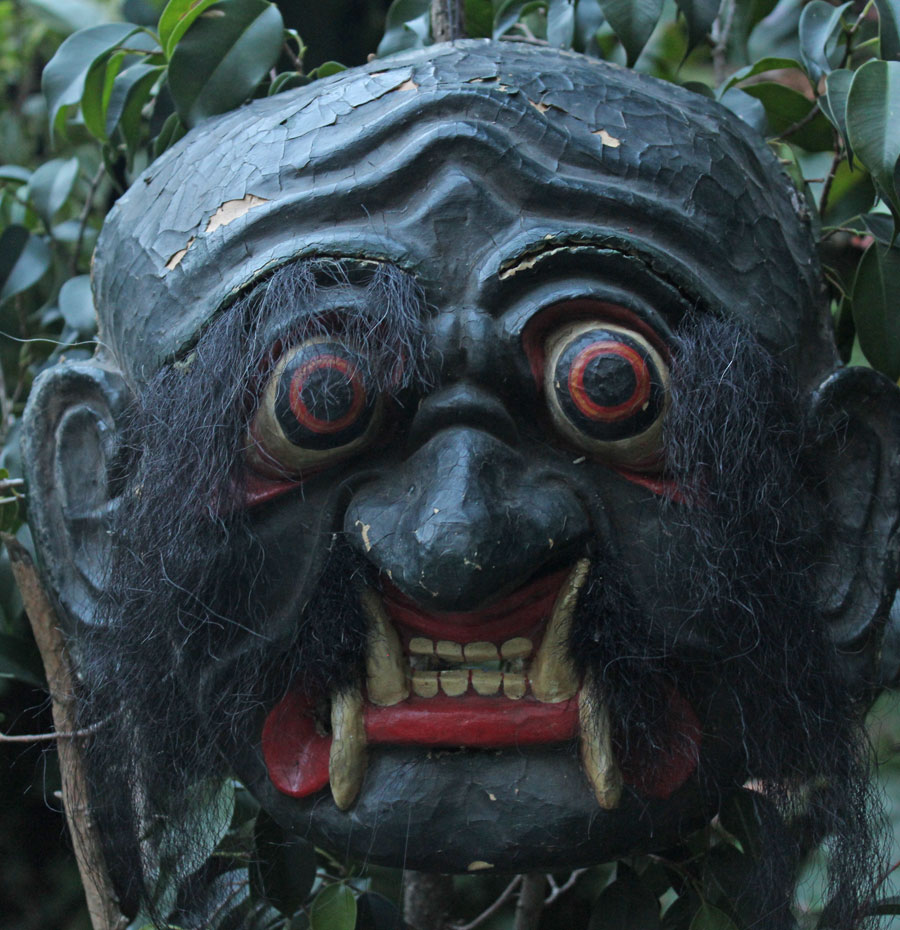 Q: I bought the mask in an small antique book shop off of Piazza Navona, Rome, in 2016. I paid 100 Euro for it. The store attendant did not speak much English but I got the impression the mask was there for a long time.
Q: I bought the mask in an small antique book shop off of Piazza Navona, Rome, in 2016. I paid 100 Euro for it. The store attendant did not speak much English but I got the impression the mask was there for a long time.
I liked it as it was reminiscent of a Javanese Monkey mask circa 1920 that I already owned… something about the eyes. The mustache is made of some kind of hair. It is light weight wood and the circle around the nose looks less like a break than paint chipping, but I can’t be sure.
I collect but more for enjoyment then anything else. I buy what I feel intrigued by… something that I just can’t take my eyes off. Anyway, if origin or age could be identified that would be wonderful. Eliza, 1707
A: Because your story and three illustrations are so good, I’ll use this as an opportunity to talk about authentic masks and reproductions. Authentic means the mask was used in culture or for that purpose. Reproductions are made for tourists and collectors. They will cost less. But if they are artificially aged, as yours has been, some sellers will lie about the history and try to get more money.
The attractive character for the Javanese Topeng dance drama we see here is described on page 64 of Masks of the World, and on this website. B







